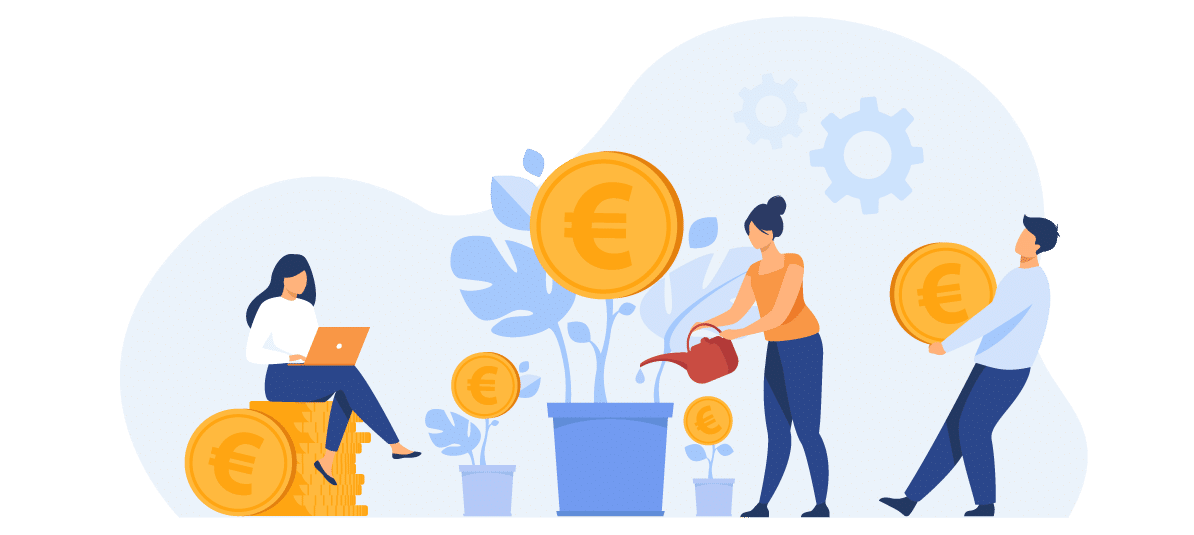How much money to invest according to your situation

Both questions depend on your goals and time frame. To determine how much you should invest, you will also need to consider how much money you have saved.
General advice: invest what you don’t need
Invest the money you don’t need or are willing to lose. This is the most often repeated recommendation and for good reason.
On the one hand, it helps you realize that every investment involves risk (you may lose some of your money, but rarely all of it). On the other, it serves as a general framework for how much you should invest.
The crux of the matter is figuring out how much money you don’t need. If you’re like most people, when you hear this phrase you may think you need all your money, and you’re probably right.
In reality, what this statement means is that you should always have a financial cushion to allow you to face unforeseen expenses and give you some financial stability for times of market downturns (which there will be).
And how much money are we talking about? Between three and six months of your fixed expenses or, if you prefer to simplify this, of your income. In other words, if your fixed expenses are 1,500 euros each month, you should have 9,000 euros in savings before you start investing.
This figure is a guideline. There are people who need more money to feel comfortable.
The rest is what you should invest, because there is one thing you should be clear about: saving is not enough to secure your future (at least the future you are dreaming of).
There is one exception to the general rule. If you have a high savings capacity, you can combine savings and investment from the third month of your buffer. For example, if your fixed expenses are 1,500 euros per month and you save 500 euros per month, you could start investing 150 euros each month and keep saving the rest until you create your six-month financial cushion.
Invest according to your situation
Always having a financial cushion will help you to:
- Face unforeseen expenses without having to put your investment plan on hold (it is harder to restart).
- Cope with unplanned expenses without having to withdraw your money if the stock market crashes.
- Be confident that you have money available as a buffer, no matter what happens. That is why it is important that this emergency fund is kept in a safe and liquid product. In other words, in a product that will not lose value beyond inflation and that you can access easily whenever you need it.
The amount of this cushion, which is the part of your assets that will not be invested, can change according to your needs and your personal situation.
For some people, six months of fixed expenses will not be enough and they will need a bit more. By the same token, there are also situations in which it is advisable to keep a little more capital.
For example, a self-employed person who is not entitled to unemployment benefits may feel more secure if they accumulate one year of their income as a cushion compared to an employed person who knows that they will receive unemployment benefits if they lose their job.
Along the same lines, a 25-year-old living with their parents does not have the same need for a financial buffer as a 28-year-old couple who have just become independent or a 35-year-old with two children.
Invest according to your goals (and their time frame)
The second variable when deciding how much money you should invest is related to your financial and life goals and when you want to hit these. This affects both the risk you can take with your investments and the amount you should keep invested.
To make this easier to understand, if you are young and your goal is to save in the long term, invest everything above your emergency cushion. Conversely, if your goal is to buy a house in 10 years, as the time of purchase approaches, it is advisable to reduce the risk of your investments and even set aside that money when there are less than 12 months left, for example.
That is why it is important to divide the investments you make according to their time frame between the short, medium and long term. For the short term you have your emergency cushion or more strategic products such as deposits or conservative PIAS, which are very stable because your objective is to preserve your money.
In the medium and long term you can take more risk and seek a higher return. Again, as time passes and the time approaches to reap the rewards of your investment plan, it becomes increasingly advisable to reduce the risk and even the capital you invest. Until that time remember, saving is fine, but it may not be enough to achieve your goals.


